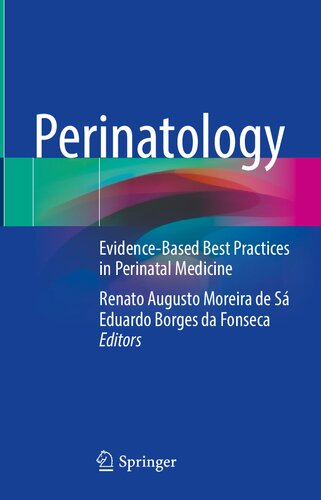

Most ebook files are in PDF format, so you can easily read them using various software such as Foxit Reader or directly on the Google Chrome browser.
Some ebook files are released by publishers in other formats such as .awz, .mobi, .epub, .fb2, etc. You may need to install specific software to read these formats on mobile/PC, such as Calibre.
Please read the tutorial at this link: https://ebookbell.com/faq
We offer FREE conversion to the popular formats you request; however, this may take some time. Therefore, right after payment, please email us, and we will try to provide the service as quickly as possible.
For some exceptional file formats or broken links (if any), please refrain from opening any disputes. Instead, email us first, and we will try to assist within a maximum of 6 hours.
EbookBell Team

5.0
98 reviewsThis book presents the latest evidence-based guidelines for perinatal management and is designed to help obstetricians and neonatologists minimize complications and offer patients the best possible care.
Since 1960, there has been a significant increase in basic and clinical investigations on normal and pathological pregnancy in the developed world. This has provided insights into the physiopathology of pregnant women, fetuses and newborns and led to the development of new technologies, bringing about a new medical subspecialty: perinatal medicine.The book is divided into eight main sections: The first examines basic periconceptional care and discusses the ethical aspects of perinatology. The next section focuses on prenatal considerations, such as the nutritional aspects of gestation and puerperium, physical exercise during pregnancy, routine laboratory tests, prenatal care of multiple gestations and the role of the neonatologist in prenatal care. The third and fourth sections then explore fetal evaluation, and clinical intercurrences in pregnancy, respectively. The next section addresses pregnancy complications: prevention, diagnosis and management. The sixth section covers the basic aspects of congenital infections and the seventh examines labor and delivery aspects. Lastly, the final section includes chapters on neonatal assistance.
Written by leading experts in obstetrics, neonatology, and perinatology, this thoroughly updated, comprehensive resource reflects the latest information in all areas, including genetics and imaging.